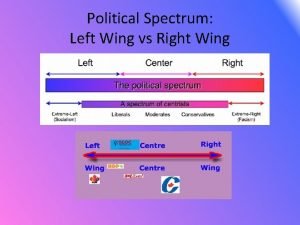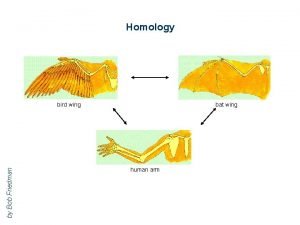WING TECH INC Efficacy and Clinical and Economic

- Slides: 1

WING TECH INC. Efficacy and Clinical and Economic Effectiveness in Resistant Hypertensive Subgroups Jan B. Pietzsch 1, Benjamin P. Geisler 1, Murray D. Esler 2 1 Wing Tech Inc. 2 Baker IDI Heart and Diabetes Institute BACKGROUND Resistant hypertension is increasingly recognized as a substantial medical problem. Renal denervation (RDN) is a new treatment option to control BP. Our goal was to identify subgroups in which RDN is clinically most efficacious and costeffective. Figure 1. Markov model used to compare disease progression for Renal Denervation (RDN) and standard of care (SOC). Transition probabilities between states are based on sources shown on right. Figure 2. Dotblot of RDN group with SBP at baseline and mos. 1, 3, and 6 (left); scatterplot of change over baseline SBP at 6 months (right). Figure 4. Calculated relative risks (RRs) for key clinical outcomes, for baseline SBP range of 160 -200 mm. Hg. METHODS We conducted a post-hoc analysis of Symplicity HTN-2 which investigated the efficacy of RDN in patients with an SBP of 160 mm Hg or greater on three or more anti-hypertensive drugs, including one diuretic, at full doses. To analyze the impact of the identified variables on clinical and economic effectiveness, a long -term state transition (Markov) model was utilized. Symplicity HTN-2 was a randomized controlled trial with n=106 patients, aged 58± 12, 34% diabetic, 16% smokers and a mean baseline systolic blood pressure (SBP) of 178± 17 mm. Hg (see table 1). Table 1: Symplicity HTN-2 cohort characteristics t=0 6 months Observations: Our lifetime Markov model implemented the selected multivariate regression model to simulate the impact of different SBP changes in subgroups. The model structure and health states are shown in Figure 1. Downstream outcomes were cardiovascular mortality, all-cause mortality, (quality-adjusted) life expectancy, costs, and discounted incremental cost-effectiveness ratio (ICER in $/QALY). Cost and utility assumptions are shown in Table 2: Cost & utility assumptions used in cost-effectiveness analysis Bivariate and multivariate linear regression was used to identify statistically significant covariates (based on comprehensive dataset of clinical parameters) and to develop a predictive model for change in SBP after six months (outcome of interest). Alpha was defined as less than 0. 05 for the bivariate analyses. All explanatory variables with a p<0. 20 were selected for a multivariate model. We also tested for clinically feasible interaction terms. 1 month 3 months 1. SBP reduction increases with higher baseline SBP. 2. Out of 4 constructed models, the following multivariate model was selected for best prediction of effect size: SBP differences based on the multivariate model and ICERs from a one-way sensitivity analysis for baseline SBP are shown in Figure 3. Calculated relative risks for clinical outcomes are shown in Figure 4. Figure 3. Calculated differences in SBP (dotted line, based on prediction model) and corresponding ICERs (dashed line) for baseline SBP range of 160 -200 mm. Hg. * Specific health-related quality of life determined by age-dependent multiplier and baseline utility. RESULTS Randomization to RDN and baseline SBP were the only predictive covariates (p<0. 001 and p=0. 007, respectively). A higher baseline SBP was negatively correlated with SBP difference in RDN patients. Figure 2 gives dot blot of the RDN group with the SBP at baseline and months 1, 3, and 6 and a scatter plot of changes after six month over baseline SBP. Observations: 1. Across the spectrum of baseline SBP, RDN leads to substantial reductions in lifetime event risks. 2. Risk reduction for clinical outcomes tends to increase with higher baseline SBP, except for stroke and CHD. DISCUSSION AND CONCLUSION Our post-hoc analysis suggests that higher baseline SBP is associated with increased treatment effect (-27 mm. Hg at 160 to -45 mm. Hg at 200 mm. Hg). However, substantial variance exists, as evidenced by size of standard error and visual inspection (scatter and blots). By definition, this also limits the predictive quality of any multivariate regression model, and might therefore lead to overprediction in certain ranges. Our Markov model analysis, utilizing the predicted effect sizes, suggests that RDN is a highly cost-effective therapy compared to standard of care medical treatment, at an order of magnitude below the commonly acknowledged threshold of $50 k/QALY. As expected, all clinical events were more reduced with an increased baseline SBP except for stroke. In conclusion, the model results suggest that RDN is clinically efficacious and cost-effective across a broad range of baseline SBPs. Confirmatory prospective studies may be necessary. DISCLOSURES: Observations: 1. ICERs increase with higher baseline SBP, but stay an order of magniture below the commonly accepted threshold of $50 k/QALY. 2. For patients with low baseline SBP (160 -170 mm. Hg), RDN is cost-saving. Wing Tech Inc. . (JBP, BPG) has provided consulting services for Ardian Inc. and continues to provide consulting services to Medtronic Inc. , the manufacturer of the assessed technology. JBP and BPG have no other commercial associations (e. g. , stock ownership, equity interests, patent-licensing arrangements etc. ) that could pose a conflict of interest in connection with the submitted article. MDE was the principal investigator of the SYMPLICITY HTN-2 study and has received consultancy payments and travel expenses from Medtronic Ardian LLC, but has no other commercial benefit – specifically owns no stock – has no equity interests and did not and does not receive device or procedure royalties.

